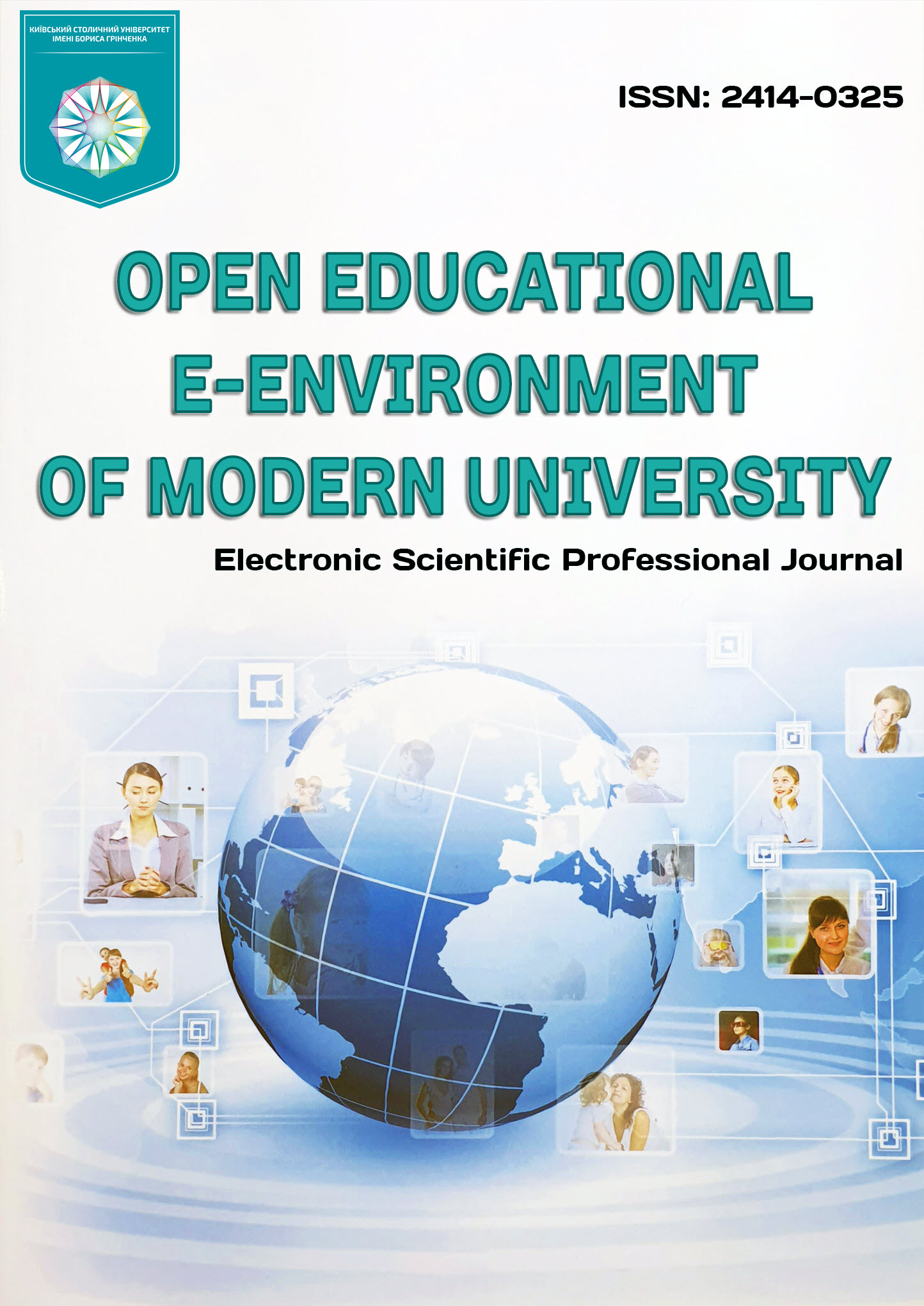USE OF ARTIFICIAL INTELLIGENCE TECHNOLOGIES IN THE EDUCATIONAL PROCESS OF PROFESSIONAL DESIGNER TRAINING
DOI:
https://doi.org/10.28925/2414-0325.2024.1615Keywords:
artificial intelligence, education, digital technologies, design, artificial intelligence tools, STEM, digital transformationAbstract
The article explores the potential role of artificial intelligence (AI) technologies in training design professionals. The article emphasizes the significance of developing digital competencies in future designers in line with current trends in digitalization and innovation. Success and competitiveness in the labor market are increasingly determined by the ability to work effectively with digital technologies, including AI.
The essence of the concept of 'artificial intelligence' and its relationship with the concept of 'Education 4.0' in Ukraine are examined. The text emphasizes the importance of modernizing education and introducing innovative teaching technologies, such as AI, to train highly qualified personnel capable of creating innovative design solutions based on AI technologies. The text analyzes the problem of insufficient use of such technologies in the training of future designers in Ukraine, which leads to a shortage of specialists with the necessary digital skills in the labor market.
The benefits of incorporating AI technologies into the training of designers are numerous. These include personalized learning, optimized distribution of teaching resources and methods, automated assessment and quality control of competencies, and an effective combination of independent and distance learning. It is important to note that these advantages are objective and supported by evidence. The article discusses the potential of AI in developing fundamental knowledge, practical design skills, 3D modeling, visualization, big data analysis, and interactive modeling of design solutions. It is important to avoid making claims about AI's capabilities that are not supported by evidence.
The authors propose various methods for implementing AI technologies in designer training. These include creating adaptive interactive courses on design and 3D modeling based on neural networks, developing systems for automated evaluation of creative works using machine learning, using Data Science to optimize the learning process based on big data analysis, and creating virtual 3D laboratories for simulating and modeling design processes using AI.
The article highlights the potential of artificial intelligence technologies to modernize and improve the efficiency of training future designers in the context of the digital transformation of society and the economy. The authors suggest the active implementation of AI technologies in the educational process to form highly professional and competitive design professionals who are ready for innovation.
Downloads
References
Program of the great transformation «Education 4.0: Ukrainian Dawn» (2022). https://mon.gov.ua/storage/app/media/news/2022/12/10/Osvita-4.0.ukrayinskyy.svitanok.pdf (in Ukrainian)
Kizim, S., Kutsak, L. & Liulchak, S. (2017). Intensification of professional training of teachers in higher education institutions by means of network technologies. Zbirnyk naukovykh prats. Khersonskoho derzhavnoho universytetu. Pedahohichni nauky, 6, 80(3), 254-259 (in Ukrainian)
Directorate-General for Education (2022). Ethical guidelines on the use of artificial intelligence (AI) and data in teaching and learning for educators. Publications Office of the European Union. https://data.europa.eu/doi/10.2766/153756
Marienko, M. & Kovalenko, V. (2023). Artificial intelligence and open science in education. Fizyko-matematychna osvita, 38(1), 48-53. https://doi.org/10.31110/2413-1571-2023-038-1-007 (in Ukrainian)
Morze, N., Smyrnova-Trybulska, E. & Boiko, M. (2019). The impact of educational trends on the digital competence of students in Ukraine and Poland. In E. Smyrnova-Trybulska (Ed.), E-learning and STEM Education. Studio Noa for University of Silesia, 365–379.
Chen, M., Radford, A., Child, R., Wu, J., Jun, H., Luan, D. & Sutskever, I. (2020). Generative pretraining from pixels. In III, H. D. and Singh, A., editors, Proceedings of the 37th International Conference on Machine Learning, Proceedings of Machine Learning Research, PMLR, volume 119, 1691-1703.
Fathoni, A. F. C. A. (2023). Leveraging generative AI solutions in art and design education: Bridging sustainable creativity and fostering academic integrity for innovative society. E3S Web of Conferences, 426, 01102. https://doi.org/10.1051/e3sconf/202342601102
Boichuk, V. & Umanets, V. (2018). Computer-oriented technologies in art and graphic training of students of pedagogical higher education institutions in the field of training «Professional Education». Information Technologies and Learning Tools, 63(1), 81-94. https://doi.org/10.33407/itlt.v63i1.1943 (in Ukrainian)
Shevchenko, L. & Kryzhanovskyi, A. (2018). Experimental verification of the efficiency of formation of trainee teachers’ professional competence with the use of Web technologies. Information Technologies and Learning Tools, 66(4), 197–206. https://journal.iitta.gov.ua/index.php/itlt/article/view/2112
DALL·E 3 (2023). OpenAI. https://openai.com/dall-e-3
Published
How to Cite
Issue
Section
License
Copyright (c) 2024 Shevchenko L., Umanets V., Rozputnia B.

This work is licensed under a Creative Commons Attribution-NonCommercial-ShareAlike 4.0 International License.













1.jpg)








